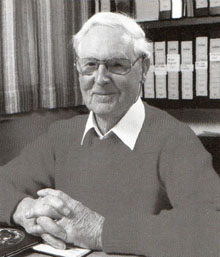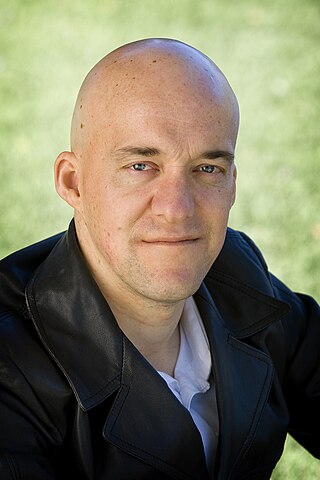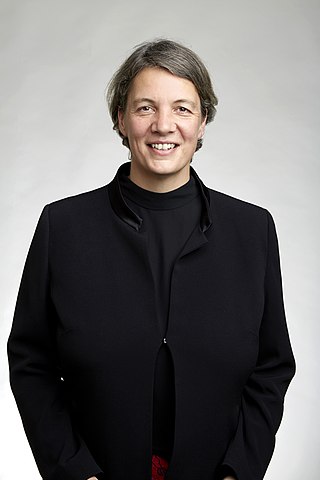Related Research Articles

The National Academy of Sciences (NAS) is a United States nonprofit, non-governmental organization. NAS is part of the National Academies of Sciences, Engineering, and Medicine, along with the National Academy of Engineering (NAE) and the National Academy of Medicine (NAM).

Frank John Fenner was an Australian scientist with a distinguished career in the field of virology. His two greatest achievements are cited as overseeing the eradication of smallpox, and the attempted control of Australia's rabbit plague through the introduction of Myxoma virus.

The Australian Academy of Science was founded in 1954 by a group of distinguished Australians, including Australian Fellows of the Royal Society of London. The first president was Sir Mark Oliphant. The academy is modelled after the Royal Society and operates under a Royal charter; as such, it is an independent body, but it has government endorsement. The Academy Secretariat is in Canberra, at the Shine Dome.

Brian Paul Schmidt is a Distinguished Professor and astrophysicist at the Australian National University's Mount Stromlo Observatory and Research School of Astronomy and Astrophysics. He was the Vice-Chancellor of the Australian National University (ANU) from January 2016 to January 2024. He is known for his research in using supernovae as cosmological probes. He previously held a Federation Fellowship and a Laureate Fellowship from the Australian Research Council, and was elected a Fellow of the Royal Society (FRS) in 2012. Schmidt shared both the 2006 Shaw Prize in Astronomy and the 2011 Nobel Prize in Physics with Saul Perlmutter and Adam Riess for providing evidence that the expansion of the universe is accelerating.
Suzanne Cory is an Australian molecular biologist. She has worked on the genetics of the immune system and cancer and has lobbied her country to invest in science. She is married to fellow scientist Jerry Adams, also a WEHI scientist, whom she met while studying for her PhD at the University of Cambridge, England.

Hugh Phillip Possingham, FAA, is the former Queensland Chief Scientist and is best known for his work in conservation biology, applied ecology, and basic ecological theory including population ecology. He is also a professor of mathematics, Professor of Zoology and an ARC Laureate Fellow in the Department of Mathematics and the School of the Environment at The University of Queensland.

Matthew England is a physical oceanographer and climate scientist. He is currently Scientia Professor of Ocean & Climate Dynamics at the University of New South Wales, Sydney, Australia.
The Basser Library is the library of the Australian Academy of Science, established in 1960 following the donation of £25,000 ($50,000), by philanthropist Sir Adolph Basser (1887–1965). The Library collects published and unpublished material documenting the history of science in Australia, with a particular emphasis on collecting biographical material about prominent scientists, and promotes related historical research.

Barry William Brook is an Australian scientist. He is an ARC Australian Laureate Professor and Chair of Environmental Sustainability at the University of Tasmania in the Faculty of Science, Engineering & Technology. He was formerly an ARC Future Fellow in the School of Earth and Environmental Sciences at the University of Adelaide, Australia, where he held the Sir Hubert Wilkins Chair of Climate Change from 2007 to 2014. He was also Director of Climate Science at the Environment Institute.

Michelle Yvonne Simmons is an Australian quantum physicist, recognised for her foundational contributions to the field of atomic electronics.
Professor Jane Elith is an ecologist in the School of Botany at the University of Melbourne. She graduated from the School of Agriculture and Forestry at the University of Melbourne in 1977. She specialises in ecological models that focus on spatial analysis and prediction of the habitat of plant and animal species. Following graduation, she was a research assistant and tutor for three years, and then spent the following 12 years raising her children. She returned to the University of Melbourne in 1992 and later commenced a part-time PhD in the School of Botany. She was awarded her PhD in 2002 on 'Predicting the distribution of plants'. Since then, she has been a research fellow in the School of Botany. She is currently an ARC Future Fellow and sits within the Centre of Excellence for Biosecurity Risk Analysis at the University of Melbourne.
Ulrike Mathesius is a German–Australian plant microbiologist in the Division of Plant Sciences at Australian National University (ANU). She is an Australian Research Council (ARC) Future Fellow at the ANU, National Tertiary Education Union (NTEU) member and Professor at the ANU in plant science, biotechnology and plant-microbe interactions. Her research focuses on root microbe interactions and symbionts to parasites. Mathesius won the 2013 Fenner Medal awarded by the ARC for research in biology for outstanding early-career researchers under the age of 40.
The Matthew Flinders Medal and Lecture of the Australian Academy of Science is awarded biennially to recognise exceptional research by Australian scientists in the physical sciences. Nominations can only be made by Academy Fellows.

Katherine Belov is an Australian geneticist, professor of comparative genomics in the School of Life and Environmental Sciences and Pro Vice Chancellor of Global Engagement at the University of Sydney. She is head of the Australasian Wildlife Genomics Group and research expert in the area of comparative genomics and immunogenetics, including Tasmanian devils and koalas, two iconic Australian species that are threatened by disease processes. Throughout her career, she has disproved the idea that marsupial immune system is primitive, characterized the South American gray short-tailed opossum's immune genes, participated in the Platypus Genome Project, led research identifying the properties of platypus venom, and identified the cause of the spread of the Tasmanian devil's contagious cancer.
Una M. Ryan is a biochemist from Ireland, researching parasites and infectious agents in Australia, where she lives. She is an associate professor at the School of Veterinary and Biomedical Sciences of Murdoch University. In 2000, she received the Frank Fenner Prize for Life Scientist of the Year from the Prime Minister of Australia for her work in isolating a method of diagnosing parasites.
The Ruth Stephens Gani Medal is awarded annually by the Australian Academy of Science to recognise research in human genetics.
Jian Yang is a Chinese statistical geneticist and Professor of Statistical Genomics at the University of Queensland's Institute for Molecular Bioscience, as well as an affiliated professor at the Queensland Brain Institute. He received the 2015 Ruth Stephens Gani Medal for his research on the "missing heritability" of complex traits. In 2017, he received the Frank Fenner Prize for Life Scientist of the Year from the Prime Minister of Australia for his work on the basis of genetic variation in complex human traits, such as obesity and schizophrenia. He has researched the contribution of numerous single nucleotide polymorphisms to variation in quantitative traits, such as human height, as well as the role of natural selection in driving genetic variation in such traits. He and his colleagues have also used genetic data on common diseases to study potential environmental risk factors for them.

Kerrie Ann Wilson is an Australian environmental scientist who is the Queensland Chief Scientist and a Professor in the Faculty of Science at Queensland University of Technology (QUT). She was formerly the Pro Vice-Chancellor at QUT. Wilson is also an affiliated professor in conservation science at the University of Copenhagen, honorary professor at The University of Queensland, a member of the Australian Heritage Council and the Australian Natural Sciences Commissioner for UNESCO.
Lee Berger, is an Australian biologist and veterinarian, who discovered during her PhD that the fungus Batrachochytrium dendrobatidis was responsible for the decline and extinction of hundreds of amphibian species.
References
- ↑ "UWA scientist wins Academy Award".
- ↑ Fenner Medal Australian Academy of Science
- ↑ "Fenner Medal | Australian Academy of Science". www.science.org.au. Retrieved 2021-12-07.
- ↑ "Australian Academy of Science - Fenner medal". Archived from the original on 13 April 2014. Retrieved 13 April 2014.